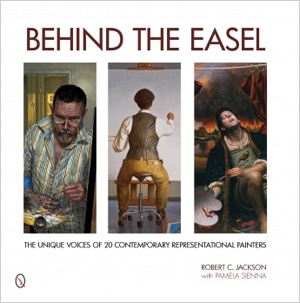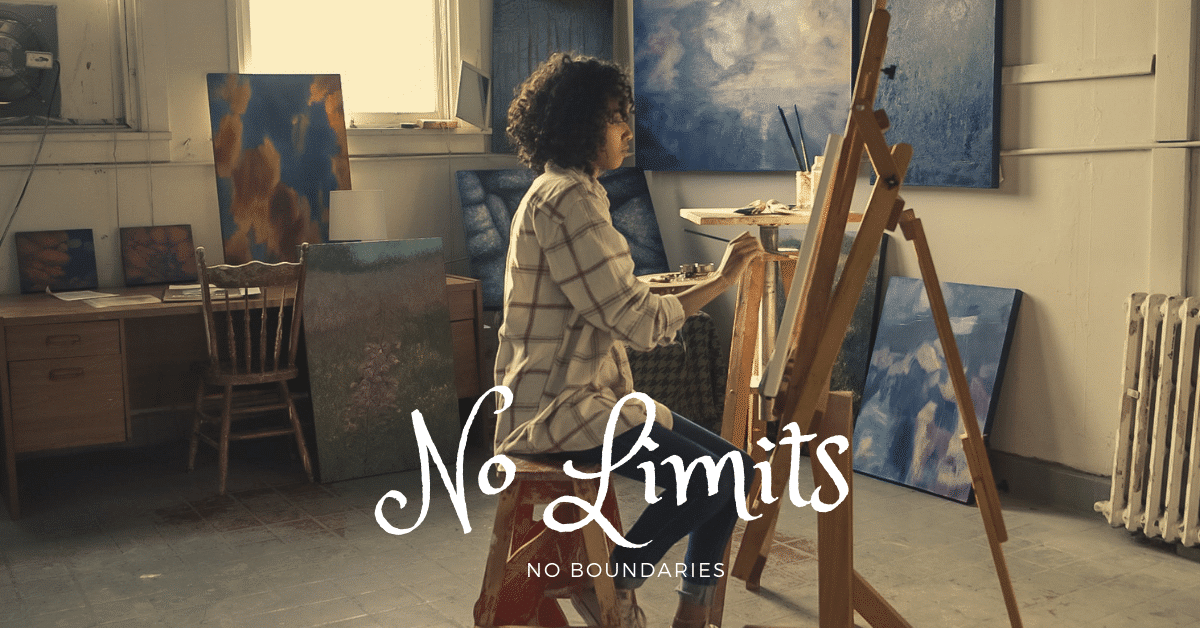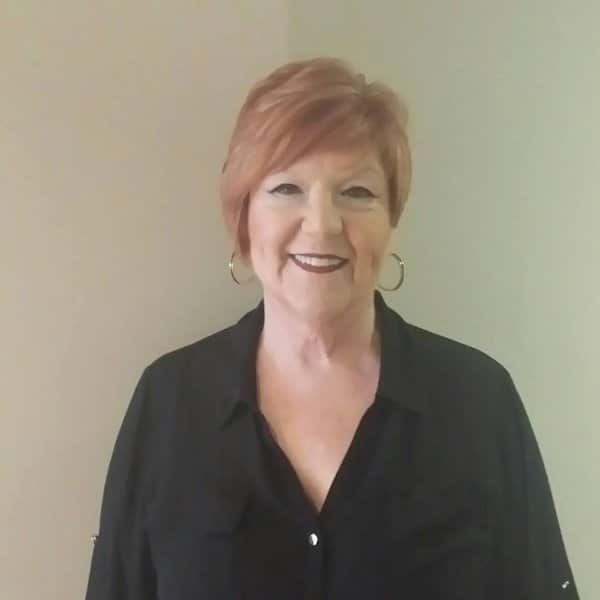 Artist Robert C. Jackson is an American realist painter whose colorful still lifes feature balloon dogs, toys, and vintage crates arrayed in clever tableaux. Bob began his professional life as an electrical engineer, designing radio systems for Motorola, and then spent six years as a pastor before finally pursuing his passion for art. For his book Behind the Easel, he selected and interviewed 20 contemporary representational painters, and their artwork is the focus of Truth & Vision: 21st Century Realism, a major new exhibition at the Delaware Art Museum that runs from October 22, 2016 until January 22, 2017.
Artist Robert C. Jackson is an American realist painter whose colorful still lifes feature balloon dogs, toys, and vintage crates arrayed in clever tableaux. Bob began his professional life as an electrical engineer, designing radio systems for Motorola, and then spent six years as a pastor before finally pursuing his passion for art. For his book Behind the Easel, he selected and interviewed 20 contemporary representational painters, and their artwork is the focus of Truth & Vision: 21st Century Realism, a major new exhibition at the Delaware Art Museum that runs from October 22, 2016 until January 22, 2017.
In a recent interview with CHF Editorial Director Sofia Perez, Bob discussed the joy of communicating with your audience, and the failure of art schools to prepare their students for the marketplace. He also addressed what it takes to run a professional practice.
SP: Why did you decide to produce this book?
 RJ: I did not go to art school. I learned by looking at art. Every couple of months, I used to go to New York City, and wander the galleries. Whenever I went to different cities, I’d go look at art. There was a bunch of artists that really stood out to me. Unbeknownst to them, they became my teachers.
RJ: I did not go to art school. I learned by looking at art. Every couple of months, I used to go to New York City, and wander the galleries. Whenever I went to different cities, I’d go look at art. There was a bunch of artists that really stood out to me. Unbeknownst to them, they became my teachers.
I kept looking at their work, and thought, “I see these really talented painters out there, and I wish there was a book on these kinds of artists, but I’m just not seeing it.” Then I got to a point in my career when I was actually starting to show my work with these people, so I decided to interview them, and put together the book I wish I’d had for the last 20 years.
SP: In it, you ask all of the artists the same ten questions, and you also answered them yourself. In response to one of the questions–“For whom do you paint?”–you said you want an audience, something to which many artists won’t admit. Why is that?
RJ: I knew it would be a controversial answer. Art really is a funny, funny thing. When people write a piece of music, they’d love it if people loved it, but for some reason, artists say, “I don’t care if anyone likes it. I just paint for myself.” It’s a very arrogant, weird response. As I wrote in the book’s introduction, I never wanted to be a writer–I speak visually–and if we as artists are trying to speak visually, it seems ludicrous to say, “I don’t care if anyone sees it, or gets it.” The same artists who make that statement are the first ones who want a giant crowd at their opening.
SP: You even go one step further–not just admitting that you want an audience, but also saying that you are having a conversation with that audience through your art. Can you elaborate on that?
RJ: It’s exactly like the song example. Gosh, how wonderful would it be if you wrote a song that became an anthem for people, and that they continue to sing for the rest of their lives.
A painting is a very static object. You paint it, and it doesn’t move. It never changes. It better be interesting enough–as they look at it over the course of their lifetime of owning it–that it continues to engage them. That they see different things in it, and that it has a little bit of conversation with them. I do try to think of that.
SP: Many artists think that the only way their careers can have artistic merit is if they starve. Is that why so many are uncomfortable with the idea of financial success?
“…There’s that old line: ‘Oh, you’re going to be worth a lot when you die.’ That’s the biggest lie of art. Their work is forgotten, and worth nothing, unless there’s someone promoting them…”
RJ: Yeah, it’s probably the fault of the arts schools, too. They promote that idea. I didn’t go into art initially. I went to school as an electrical engineer, and they’d tell us, “This percentage of our students finds careers in the field once they graduate.” But you go to an art department, and they say, “No one ever makes a living in the field.” Wait a minute. You’re proud of that? The amount of money a kid pays to go to college, and you’re proud to teach them that they’ll never make a living doing the work? That’s shameful. I understand why colleges want to cut art departments.
You have to have a different attitude. Dance wants to communicate. Poetry wants to communicate. All of these other fields. But painting? Nah. “Art should be really difficult, and no one should get it.” Great.
SP: As if it exists in a vacuum–
RJ: It’s elitist. It’s saying, “We don’t need anyone.”
SP: In the book’s introduction, you wrote about choosing to feature artists you love–folks whose work has inspired you. In essence, you’ve built a community of your peers. Is that important to you?
RJ: It’s not a book of local artists by any means. For the museum opening, they’re coming from Boston, LA, Canada, Mexico–from all over–to the teeny little state of Delaware, and the show is the first time we’ll all be together. It’ll be interesting for us to actually talk, and I organized some unique activities where we can just hang out. I hope we sit there and chat about the future, and other things we can do together. As for community, our work is pretty solitary. That’s the artist’s life. Each person is an individual small businessman, I suppose.
SP: Do you wish there were more opportunities for artists to come together, separate of seeing each other’s work in galleries–some vehicle for exchanging information about business practices and the like?
RJ: It’s a very taboo subject, which is kind of funny. The other day, I was speaking to an artist I know–I won’t say his name–and I asked him how his show went. He told me it went pretty well. So I said, “Way to go, buddy. Congratulations!” He couldn’t believe I was being serious. I said, “Yes, I’m psyched.” After admitting that the show had done quite well, he said, “I’m not allowed to tell anyone that. Most artists are doing so badly that you don’t really talk about success.” And if they’re doing badly, some artists want everyone else to do badly. Success is a tough thing to talk about.
SP: How sad. It’s a zero-sum outlook–if you do well, then I can’t–when actually, the reality is just the opposite. When there’s more art in the world, it’s better for everyone.
RJ: You’re right. I love to hear about places where the market is going strong, and about other artists who are doing well.
SP: Tell us about the Delaware Art Museum show.
RJ: There are 20 artists in my book. One of the guys passed away after I interviewed him, but his wife is coming to the opening, so she’ll be his stand-in, which will be wonderful. Another artist is working on a documentary in Europe, so he can’t be there. But for the most part, I think everyone is coming.
When I invited them, a lot of artists said, “Oh, my gosh! Yes, I’ll be there.” I think it comes down to what you said before–we don’t have very many excuses to hang out and chat. It’ll be nice to just sit there, behind closed doors, and say, “How’s it going? Let’s learn from each other. What’s working for you now?” That kind of stuff is good.
SP: How is the show structured?
RJ: It’s a mixture. When the curator first called me about it, she was thinking of getting pieces that were in the book, and having it serve as a kind of catalog for the show. But a book takes about a year to get published, and then it’s two years from that until you have the museum show, so by this point, the newest work in the book is three years old. Most artists are only happy with what they painted three months ago. They like what’s still wet on their easel. So I told the curator, “I hope you try to communicate with the artists, and find out if there’s something new they’d like to show that wows you.”
For each artist, the show includes one of their works that’s in the book, and then it has other pieces that were chosen by the curator and the artist. There’s an average of three pieces per artist, so three works times 20 artists puts you at 60 pieces. That’s a big show.
SP: What a smart decision–to include work that’s not in the book. It gives the show added value. If people love the artists that are in the book, they can come to the show, and see more than what they’ve already seen.
RJ: Absolutely. And beyond that, the folks at a local gallery [Somerville Manning Gallery in Greenville, Delaware] asked if they could contact all the artists, and do a simultaneous show. I didn’t think about it much until I started talking to them and seeing the pieces they were getting, but it’s really become part one and part two of the show.
You can go to the museum first, and see giant works, but maybe you can’t get quite close enough because the guards make you scoot back. Then you head over to this commercial gallery, which is five minutes away from the museum, and put your nose right up to them. I think people enjoy having both options. Plus, they can buy work they like at the gallery.
SP: With the book and the show, you’re serving as writer, editor, publisher, curator, and agent. Did you consciously decide to get involved with different facets of the industry, or were both projects done purely out of love for the works?

RJ: All of the above. It’s a crazy tough career. I’m sure you hear that a lot when you interview artists. There are so many misconceptions. There’s that old line: “Oh, you’re going to be worth a lot when you die.” That’s the biggest lie of art. Yes, the works of Andrew Wyeth or Andy Warhol are worth more now, but when most people die, they’re dead. Their work is forgotten, and worth nothing, unless there’s someone promoting them.
In the same way, your career can die, unless you’re continuing to move it forward, and working on it. One of my faults that people have pointed out to me is that I don’t relish victories. When these artists are here for the opening next week, perhaps we should sit back and celebrate, but I just want to ask them, “Hey guys, what’s next?” People say, “Oh, you’re in this magazine,” and my response is, “Yeah, that’s great, but what can we do next?” It’s horrible on my part, but that’s who I am.
SP: Or, you’re a really smart businessman and artist. You’re thinking about the next step in your career, and the next project that’s going to energize you.
RJ: And initially, some of the ideas make me go, “Ugh.” Like when I came up with the idea for this book, I thought, “I so don’t want to do this. It’s going to take a lot of effort and time. Yeah, I should do it. No, I don’t want to do it.” It’s a battle that goes on. Same with the museum show.
But you can’t just sit there, and say, “Now I’m going to be discovered.” It doesn’t happen that way. You have to say, “Okay, that’s one nice thing on the resume, but where do I go from here?”
SP: When Daniel DiGriz interviewed you for CHF’s Thriving Artist Podcast, you told him that producing the book was an investment. What did you mean by that?
RJ: It’s just one of the puzzle pieces in a career. I really didn’t want to become a spokesman, and I do find that there’s a little bit of that coming out of this project, but I wanted to tip my hat to these artists.
I’m a book addict. I take a book to lunch with me every day–an art book, because I’m not much of a reader–and I stare at the pictures. People around town kid me. “What are you carrying today, Bob?” So I wanted to create my favorite art book, and I wanted to make a book that I was interested in reading. One that would feature artists talking about their own work, instead of the critics’ opinions. I also wanted full-page images.
In doing it, I was honoring them, but in some ways, it also helps all of our credibility that we’re putting another thing out there. Like I say, it’s not one book or one show. It’s a combination of all of it.
SP: The questions you asked these artists were all focused on creativity and inspiration, but did you learn anything from them about your own professional practice and the process of managing that?
“…You can never rest on your laurels. ‘Well, I was on that magazine cover 20 years ago.’ Everyone forgot about it six months later, much less 20 years later…”
RJ: I wanted to put together a book for collectors, one that the average person could pick up and read, without talking about what types of brushes they’re using, or what brand of paints they buy. I wanted it to speak on a broader level.
As for what I learned from these artists? I’m actually the youngest one in the group, I think. They’re all between 50 and 75 years old, so we’re all pretty set in our ways. These folks are very professional. They’re old enough that they’ve been dealt the hard knocks in this career. They’ve been through it all. It’s trying to find out what’s opened doors, and what’s shut them. That’s what we’re getting from each other.
SP: Any artist who has a long career has to deal with change and rejection, even after they’re established. How do you handle those challenges?
RJ: In this career, you have to be alert and vigilant. Maybe the gallery looked really good 20 years ago, but slowly it’s dying, and you’re going down with a sinking ship. The same thing is true about the digital age and social media. It’s like saying that everyone needs to do MySpace. But that died, and then we moved on to something else.
You can’t say that you’re sticking with something, come hell or high water. And you can never rest on your laurels. “Well, I was on that magazine cover 20 years ago.” Everyone forgot about it six months later, much less 20 years later.
Even these guys who are in the senior part of their careers have to deal with it. Maybe their gallery owner is now 80. Or that person has passed on, and the gallery closed. So what happens then? You’d like to think there will be another gallery just waiting for you, chomping at the bit, but it’s not always that way. As things change, I’m continually watching the waters around me, trying to see what’s next.
SP: Your work is so playful, which probably makes it ripe for knockoffs–for folks to make prints or put it on a product without your permission. Have you had to battle to protect your intellectual property?
RJ: Yeah, you see it. It makes you cringe at times, though I’m probably way looser with that than most people. I care about my original art an awful lot, but I’d be lucky to have the image of my work emblazoned on every t-shirt and hat. “Oh my goodness, it’d be horrible if everyone knew your art.” (laughs) I don’t want it mimicking my original art, but if it does get around, that’s great.
People write me from magazines to ask if they can use it, and I always tell them to go for it. If it gets my name out there, that’s great.
SP: On your website, you feature some time-lapse videos that show the “making of” a few of your pieces. That seems like a great a way to connect with your fans without taking you away from the work itself.
RJ: I mounted a camera in the corner of the studio. I thought, “How can I make it entertaining.” It seems that some people like it, so that’s good. You throw it out there, and hope it means something to someone.
I don’t know whether I have fans, but I do think of collectors. I have a few of them in mind when I do things like that. I think, “What would they like to know as they stare at one of my paintings?” They enjoy seeing the process. Many of them collect multiple works, and if I can engage with them, that’s a nice thing.
SP: You didn’t go to art school, and you had two other careers before becoming an artist at the age of 30. Did that nontraditional trajectory afford you a certain freedom?
RJ: Yeah, I think so. You’ll probably laugh, but I’m surprised at how uncreative most artists are. That sounds really horrible, but there are a lot of rules in art. I think, “Seriously? I thought art wasn’t supposed to have rules.”
There’s a side of me that says, no, I’m not observing the rules. Creativity allows you to expand yourself, and part of that is how you communicate with people. Like I said earlier, that’s one of the rules of art–you’re not supposed to do that. Well, that’s ridiculous.
SP: What big changes have you seen in the industry since you started?
RJ: You know, I’m more skeptical than most artists about the power of the web to drive sales. I can see it being the case for work that’s inexpensive, but not as those works go up in price. I wouldn’t buy something without seeing it in person, or knowing the artist. I’m always shocked when I get a card in the mail, and then I go to the show and think, “Wow, that’s way smaller than I imagined.” There are works I like a lot more in person, and others that are not nearly as appealing as I thought they’d be.
I still trust the gallery system. It’s worked well for me. I think artists forget that they’re dealing with people in everything they do. Even your gallery. I’m amazed at how unprofessional artists are most of the time.
When I’m doing a show with a gallery, or a group show, or I’m dealing with a magazine and they ask me for an image, I send it to them right away, and they say, “Oh my God. Wow.” And you know what? Your image is the one they use. Other people will say, “Well, they’re always using HIS images.” Maybe that’s because he sends it professionally. I’ve seen it my whole career–how few artists are willing to be professional. Maybe that all goes back to what we said at the beginning about business being this giant taboo. You’re expected to be a space cadet.
SP: It seems obvious, but the first step to making sure that your practice is professional is behaving professionally toward others.
RJ: Yeah, give them good quality. Send them well-done, professional-quality images that they can use for press releases and things like that. It goes a long way. It’s bewildering to me how many artists shoot themselves in the foot.
SP: Well, we’re glad that you haven’t done that, and that your work continues to be shown and sold. You’re a great role model for other artists.
RJ: I feel like the most fortunate guy in the world because I get to do this. I’m not dissing an engineering job, because for some people that’s their perfect lifestyle, but I’ve had that kind of job–where you’re sitting in a cube and staring at a wall like in the movie Office Space–and it wasn’t for me.
Is it a headache to ship stuff sometimes, or deal with the gallery? Sure, but I get to paint every day of my life. I’m not saying it’s all peachy keen, but doggone it, how fortunate are we that we get to color for a living? It’s like when you’re in kindergarten, and you’re asked what you want to be when you grow up. “I want to be a monkey trainer, an astronaut, or an artist.”







